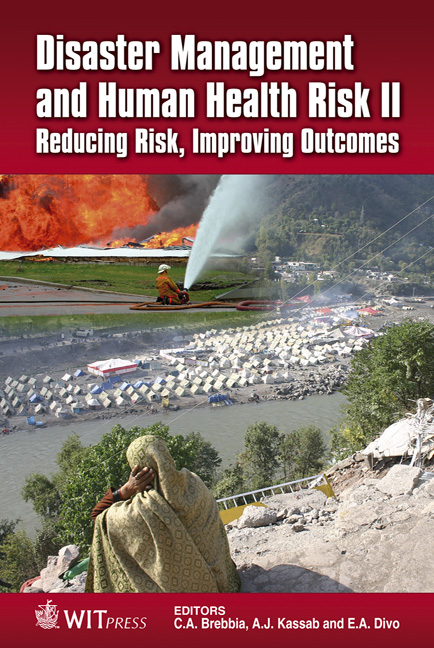Tsunami Risk Mapping Simulation For Malaysia
Price
Free (open access)
Transaction
Volume
119
Pages
12
Page Range
3 - 14
Published
2011
Size
1,190 kb
Paper DOI
10.2495/DMAN110011
Copyright
WIT Press
Author(s)
S. Y. Teh, H. L. Koh, Y. T. Moh, D. L. DeAngelis & J. Jiang
Abstract
The 26 December 2004 Andaman mega tsunami killed about a quarter of a million people worldwide. Since then several significant tsunamis have recurred in this region, including the most recent 25 October 2010 Mentawai tsunami. These tsunamis grimly remind us of the devastating destruction that a tsunami might inflict on the affected coastal communities. There is evidence that tsunamis of similar or higher magnitudes might occur again in the near future in this region. Of particular concern to Malaysia are tsunamigenic earthquakes occurring along the northern part of the Sunda Trench. Further, the Manila Trench in the South China Sea has been identified as another source of potential tsunamigenic earthquakes that might trigger large tsunamis. To protect coastal communities that might be affected by future tsunamis, an effective early warning system must be properly installed and maintained to provide adequate time for residents to be evacuated from risk zones. Affected communities must be prepared and educated in advance regarding tsunami risk zones, evacuation routes as well as an effective evacuation procedure that must be taken during a tsunami occurrence. For these purposes, tsunami risk zones must be identified and classified according to the levels of risk simulated. This paper presents an analysis of tsunami simulations for the South China Sea and the Andaman Sea for the purpose of developing a tsunami risk zone classification map for Malaysia based upon simulated maximum wave heights. Keywords: tsunami risk simulation, early warning system.
Keywords
tsunami risk simulation, early warning system




